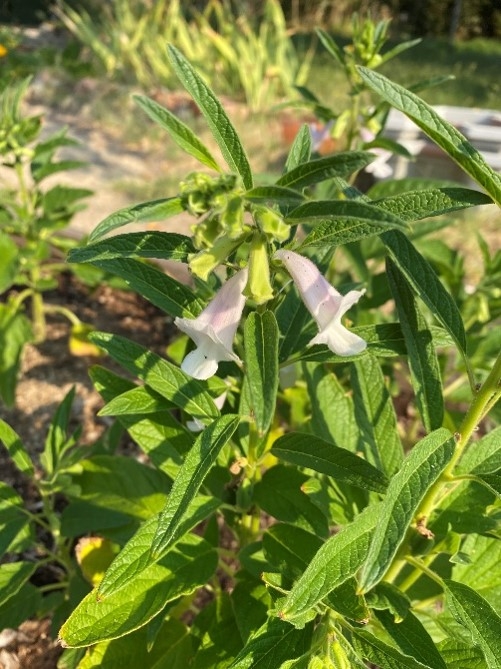As I was browsing through a seed catalog a couple of years ago, I found something I'd often eaten and enjoyed, but had never seen growing, sesame. Out of curiosity I ordered a packet of seeds.
A little history and other information
Sesame is one of the earliest oilseed plants to be cultivated. According to the University of Wisconsin's Alternative Field Crops Manual (AFCM) it has been grown for at least 4000 years, and the Agricultural Marketing Resource Center reports that production records are known from 1600 BC from the Tigris and Euphrates valleys. Because it can grow in more dry and hot conditions that many crops, it is now cultivated widely in Asia and Africa. Thomas Jefferson was very enthusiastic about the oil and tried it in test plots, but never had a good yield. It had been introduced into Georgia by enslaved Africans and Jefferson knew it as Benne.
Because the pods shattered easily, it could not be harvested by machinery until the 1950s when non-shattering varieties were developed. Most sesame products used in the US are imported from Asia or Africa, but some oilseed crops are now produced mostly in Texas and Oklahoma.
Sesame is used in many cuisines, as whole seeds, crushed seeds (tahini), meal or flour, or oil. The oil may be made from raw seeds which produces a light cooking oil or toasted seeds which produces a darker oil used more for flavoring. The oil is high in polyunsaturated fats and has a longer storage life than many oils because of an antioxidant component called sesamol. Sesame oil is also used in paints, soaps, and other non-food products.
My sesame growing experience
The seed packet said ‘Sesame, common', but the seeds weren't the ‘normal' white sesame seeds. These were black sesame seeds that are more often used in Asian cuisine. They arrived with a brochure that seems to have been designed for growing a field of plants, rather than a few in the garden. While researching this blog post I found that the AFCM has a very good Cultural Practices section for more information. Too bad I didn't find it before I planted. Maybe I will have to try again.
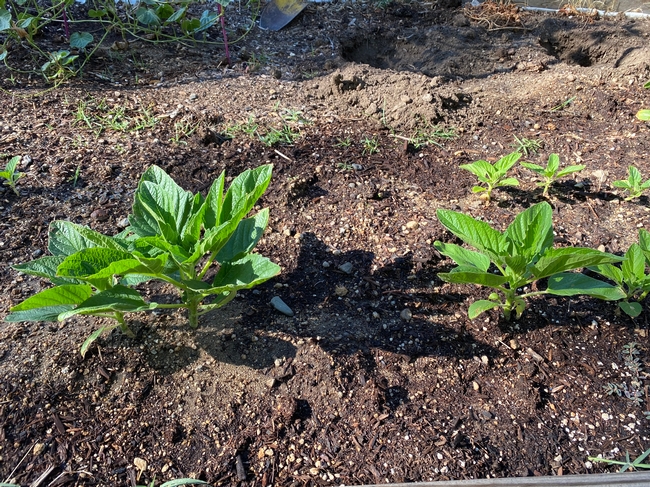
I planted them in a raised bed that is about 10 inches deep, in full sun. They germinated in late June, 2-3 weeks after planting. The directions suggested not irrigating much after they became established, but I decided those directions had been written for places with summer rain. Sesame doesn't do well in waterlogged soil according to the AFCM, so the soil must be well-drained. I hand watered them every day after observing that they weren't going to survive on Owens Valley rainfall. The plants didn't reach the height of 2-3 feet described in the brochure either. Most were about a foot tall.
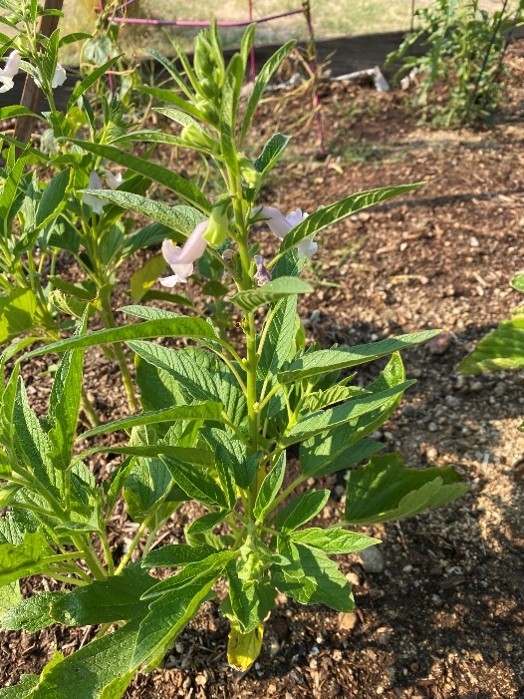
Blooms appeared in August with flowers resembling those of a desert willow or a relative of snapdragons.
For people like me who like to know how this species fits into the taxonomic scheme, the scientific name is Sesamum indicum L. and they are in the family Pedaliaceae, which is in the Order Scrophulariales. This means that sesame is in the same taxonomic order as snapdragons and desert willows. Yay, Cal Poly botany program!
The flowers developed seed capsules (pods) that grew pressed close to the stems. The capsules turned brown and were ready to harvest in about a month. Each one held at least 20 seeds in four rows. I harvested about 20 plants and got about 1/3 cup of seeds.
If the pods were entirely dry, the seeds would pour out of the openings at the top of the capsules, but for some I had to crush the capsule, which made separating the seeds from the chaff much more work. Must work on my winnowing skills.
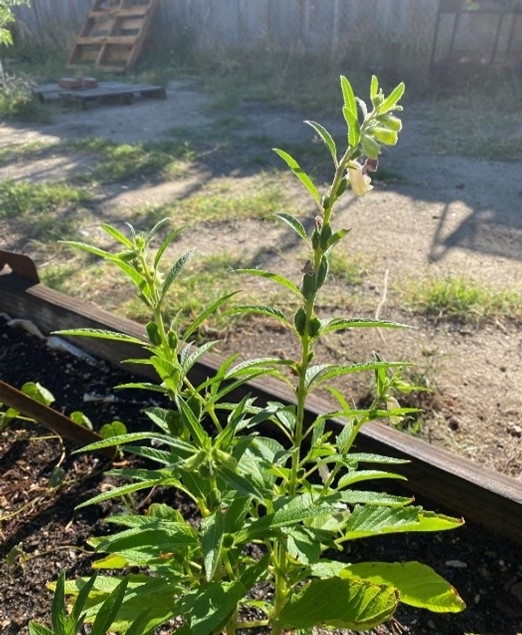
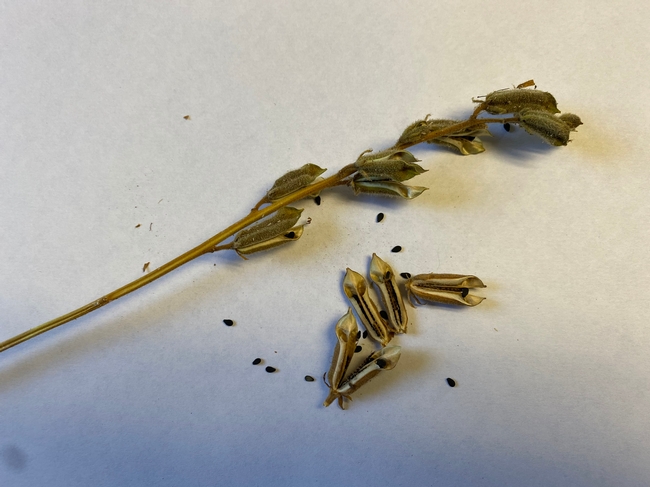
I've used the seeds in several recipes, and they are just as delicious as I'd hoped. So far my favorite is a recipe for sesame crusted fish that highlights the sesame flavor.
Sesame Resources:
- Agricultural Marketing Research Center. https://www.agmrc.org/commodities-products/grains-oilseeds/sesame-profile
- The Jefferson Monticello. https://www.monticello.org/site/house-and-gardens/in-bloom/sesame
- University of Wisconsin Alternative Field Crop Manual
